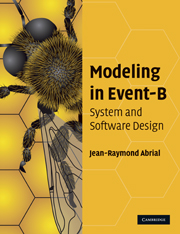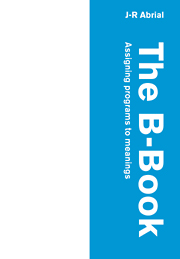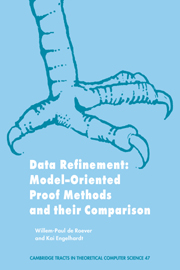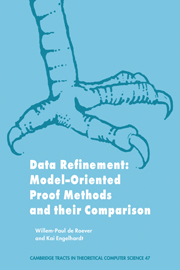Modeling in Event-B
A practical text suitable for an introductory or advanced course in formal methods, this book presents a mathematical approach to modelling and designing systems using an extension of the B formal method: Event-B. Based on the idea of refinement, the author's systematic approach allows the user to construct models gradually and to facilitate a systematic reasoning method by means of proofs. Readers will learn how to build models of programs and, more generally, discrete systems, but this is all done with practice in mind. The numerous examples provided arise from various sources of computer system developments, including sequential programs, concurrent programs and electronic circuits. The book also contains a large number of exercises and projects ranging in difficulty. Each of the examples included in the book has been proved using the Rodin Platform tool set, which is available free for download at www.event-b.org.
- Written by the creator of the leading model-based formal method, B
- Gives real examples from many different areas of computing and a whole chapter of exercises and projects, ranging in difficulty
- The accompanying tool set, the Rodin Platform, is available free for download
Reviews & endorsements
"This second masterpiece was well worth the wait. I’ve already put it to daily use."
George Hacken, Computing Reviews
Product details
June 2010Hardback
9780521895569
612 pages
253 × 195 × 35 mm
1.32kg
170 b/w illus. 30 exercises
Available
Table of Contents
- Prologue: faultless systems – yes we can!
- Acknowledgements
- 1. Introduction
- 2. Controlling cars on a bridge
- 3. A mechanical press controller
- 4. A simple file transfer protocol
- 5. The Event-B modeling notation and proof obligations rules
- 6. Bounded re-transmission protocol
- 7. Development of a concurrent program
- 8. Development of electronic circuits
- 9. Mathematical language
- 10. Leader election on a ring-shaped network
- 11. Synchronizing a tree-shaped network
- 12. Routing algorithm for a mobile agent
- 13. Leader election on a connected graph network
- 14. Mathematical models for proof obligations
- 15. Development of sequential programs
- 16. A location access controller
- 17. Train system
- 18. Problems
- Index.







